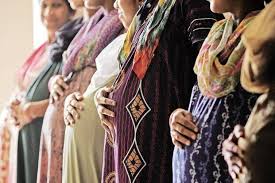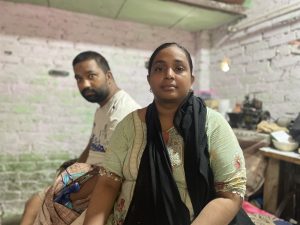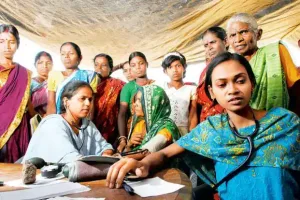Why India Is Struggling With The Burden Of Teen Pregnancies

The pandemic may have undone decades of work in controlling teen pregnancies, shows a Behanbox analysis: at least 7% of all women aged 15-19 years began child-bearing in 2019-21, according to the latest round of National Family Health Survey. This is only a marginal decline since 2015, when the figure stood at nearly 8%.
Up to 5% of the women in this age group have had a live birth, and 2% are pregnant with their first child, according to the data. Teenage pregnancies are higher in rural India (8%) than urban (4%).
The highest percentage of teenage pregnancies among all states and union territories was reported by Tripura (22%), followed by West Bengal (16%), Andhra Pradesh (13%), Assam (12%), Bihar (11%), and Jharkhand (10%).
Of the 36 states and union territories, 11 witnessed a surge in the number of teenage pregnancies, as per the report.
Data show that teenage pregnancy depends on multiple factors such as early marriage, schooling, socio-economic status and access to contraception. This is clearly corroborated by NFHS data – over half (53%) of currently married women between 15 and 19 years of age have already begun childbearing, as have nearly 18% with no schooling compared to 4% with 12 or more years of schooling. Only 2% of teenage women in the highest wealth quintile have started having children in this age group compared to 10% in the lowest wealth quintile. Prevalence of teenage childbearing is the highest among ST (8.7%), followed by SC (7.3%), and other caste groups (7%).
Experts believe that the pandemic has also undone the progress made in the country over the past decades with an increase in teenage pregnancies.
“Pandemic-induced school closures, loss of livelihood, mental health issues and lack of information for teenagers with poor implementation of the Rashtriya Kishor Swasthya Karyakram (RKSK) programme have worsened the situation,” said Shoba Suri, senior public health researcher at the Observer Research Foundation, an independent global think tank.
RKSK is a national program on adolescent health that was launched in 2014. It aimed to provide an impetus to adolescent health through community-based interventions through peer educators, preventive and curative services provided at Adolescent Friendly Health Clinics among others.
“But this seems to be just on paper. Challenges of early marriage, teenage pregnancy, anaemia and high incidence of maternal mortality continue to persist. Poor implementation of the programme is to blame here,” said Suri.
The median age of marriage for women in India is 19.2 years, as per NFHS-5 data. This is much lower than European countries where most women get married once they are over 22 years of age.
Early marriage
In India, 25% of women in the 15-29 age group were married before they turned 18 – the minimum legal age of marriage. Almost two-fifths of women marry before reaching the legal minimum age at marriage in West Bengal (42%), Bihar (40%), and Tripura (39%).
About one-third of women marry before reaching the legal minimum age at marriage in Jharkhand (35%), Andhra Pradesh (33%) and Assam (32%). High numbers are also reported in this category by Dadra & Nagar Haveli and Daman & Diu (28%), Telangana (27%), Madhya Pradesh (25%) and Rajasthan (25%).
A closer look at the data shows that the states and union territories with high prevalence of child brides are among those that have also recorded a high incidence of teenage childbearing.
Young girls’ ability to decide when and with whom to have children is severely constrained, noted United Nations Population Fund (UNFPA) in its 2022 report titled State of World Population.
One in five married girls between the ages of 15 and 19 years in Bihar and Uttar Pradesh face immense pressure from their in-laws to have a child immediately after marriage, found a 2021 study led by reproductive health scholar Anvita Dixit.
Pandemic effect
Several reports (see here, here, and here) have shown an uptick in child marriages since the start of the pandemic. This was observed at the start of the first lockdown around March 24, 2020, itself, said Yashi Jain, team lead at Dasra, a strategic philanthropy organisation. “Many families were pushed deeper into poverty during the pandemic. As a result, they decided to marry off their daughters in an attempt to reduce the financial burden of the family,” she said.
Schooling is an effective means to prevent early marriage and persuading families to allow their daughters to continue with their education has shown good results, said Jain. “However, school closures during the pandemic pushed many girls into early marriages,” she pointed out.
Ever since the imposition of the lockdown, one-third of reporting organisations had been alerted about an impending marriage of an adolescent girl, and a little over one-third (36%) reported being approached by a girl being forced into marriage, Dasra said in its report, Lost in Lockdown.
Before the pandemic, child helpline services, Adolescent Friendly Health Clinics and other initiatives to address adolescent sexual and reproductive health were functioning, although at a limited capacity, said Jain. “However, with the outbreak of COVID-19 all such services were impacted leading to a lack of safe spaces for adolescent girls where they could exercise their agency or understand the consequences of early marriages and teenage pregnancies,” she said.
Caste factor is a big reason pushing girls into early marriage, a Tamil-Nadu based activist Shalin Maria Lawrence reported for BehanBox. “The anxiety of ‘caste pollution’ is driving families in Tamil Nadu, primarily the rural areas, to get their underage daughters married off. Dominant caste families, afraid that their daughters will get involved with boys from marginal caste groups, get their daughters married as soon as they enter teens. This is how endogamy drives teenage pregnancies,” Lawrence explained.
In urban areas, the idea of love among teenagers is a major reason behind teenage pregnancies, she added. “No matter how offended people are by the idea of pre-marital sex, the truth is that it happens and more among adolescents,” she said.
Disruption of contraception services
The unmet need for modern contraception methods among women is much higher among adolescents (71%) than other age groups in the reproductive age bracket (27%) in India, noted a 2021 report, Adding It Up by Guttmacher Institute, a research and policy organisation working on advancing sexual and reproductive health and rights.
Further, the level of unmet need for modern contraception varies across different groups of adolescent women, the report said. “For instance, the unmet need affects 63% of adolescents from the richest households and 77% of those from the poorest households. Unmet need is also elevated among adolescent women in rural areas, those who have not begun childbearing and those younger than 18,” it stated.
A year after the COVID-19 outbreak, 12 million women experienced disruptions to their family planning services, noted the UNFPA. This led to 1.4 million unintended pregnancies, it said, citing travel restrictions, interrupted supply chains and overwhelmed health facilities as the reasons.
“During the pandemic, all healthcare resources and workforce were diverted to the handling of COVID-19 cases. This resulted in a massive disruption of contraception services of all kinds,” said Amit Ghosh, programme manager at Child in Need Institute (CINI), a non-governmental organisation focussed on children and adolescents and their right to health, nutrition, education and protection. The consequence was, in many cases, unplanned pregnancies, he added.
Lax reporting
During the pandemic, communities took advantage of the restriction placed on gatherings and married off young girls without having to make the fact known to the community, said Ghosh.
“The restricted flow of information between child protection officers, activists and organisations working for adolescent rights also emboldened family members, who now felt they would not be caught,” he said.
The Janani Surakshana Yojana (JSY) is a central government scheme that provides cash assistance for delivery and post-delivery care to women from below poverty line families and it is delivered at accredited health institutions. However, the eligibility criteria requires the beneficiary to be over 19 years of age.
“It has often been noticed that health facilities and healthcare workers enter incorrect age in the forms to ensure that underage women are not deprived of benefits,” said Ghosh, who works primarily in Jharkhand. Further, if a teenage pregnancy is reported, authorities across levels are questioned – from the local ASHA worker to the child protection officer, he added. Suppressing reports of early marriages is thus in the interest of local authorities.
In Tamil Nadu too, doctors and chief medical officers in hospitals and health centres do not report underage pregnancies, said activist Lawrence. “Most healthcare practitioners are indifferent to the condition of the woman coming in to avail treatment. They do not care if she is underage or not. They just provide the required treatment and feel that that is the end of their job,” she said.
Teen contraception is stigmatised
The idea of contraceptive measures does not exist in popular imagination, said Lawrence. “Even married couples do not use contraception, leave alone adolescents. The stigma attached to its use prevents women from asking men to use condoms. Getting an emergency pill is next to impossible even for a married woman like me. It is unimaginable for an unmarried woman to try and access the pill,” she explained. A recent report revealed a ‘shadow ban’ on the emergency contraceptive pill in Tamil Nadu.
Moreover there are no major government initiatives by the state government to address the issue of unprotected sex or premarital sex in Tamil Nadu, she told BehanBox. “Contraception has been a taboo topic in the state. Healthcare professionals do not create awareness about teen pregnancies or safe sex,” she said.
Perpetuating undernutrition
Children born to adolescent mothers are more likely to be stunted and underweight as compared to those born to adult mothers, reported a 2019 study in Lancet, an international health and medical journal.
“Adolescent pregnancy is associated with poorer maternal nutritional status, lower educational attainment, lower likelihood of accessing antenatal health services, poorer complementary feeding practices, and poorer living conditions, all of which were also associated with child stunting,” stated the report.
The prevalence of anaemia is highest (59.1%) among women falling in the 15-19 age group. Further, the child mortality rate is also higher (53 deaths per 1,000 live births) for children born to mothers aged below 20 years, according to NFHS 5 data.
“Preventing early marriage, teen pregnancies and improving women’s nutritional status can go a long way in breaking the intergenerational cycle of under-nutrition. It is time to invest in nutrition over lifespan, as this has an impact over generations,” said public health researcher Suri.
We believe everyone deserves equal access to accurate news. Support from our readers enables us to keep our journalism open and free for everyone, all over the world.




